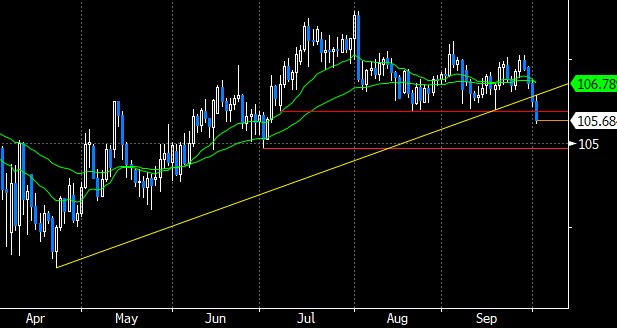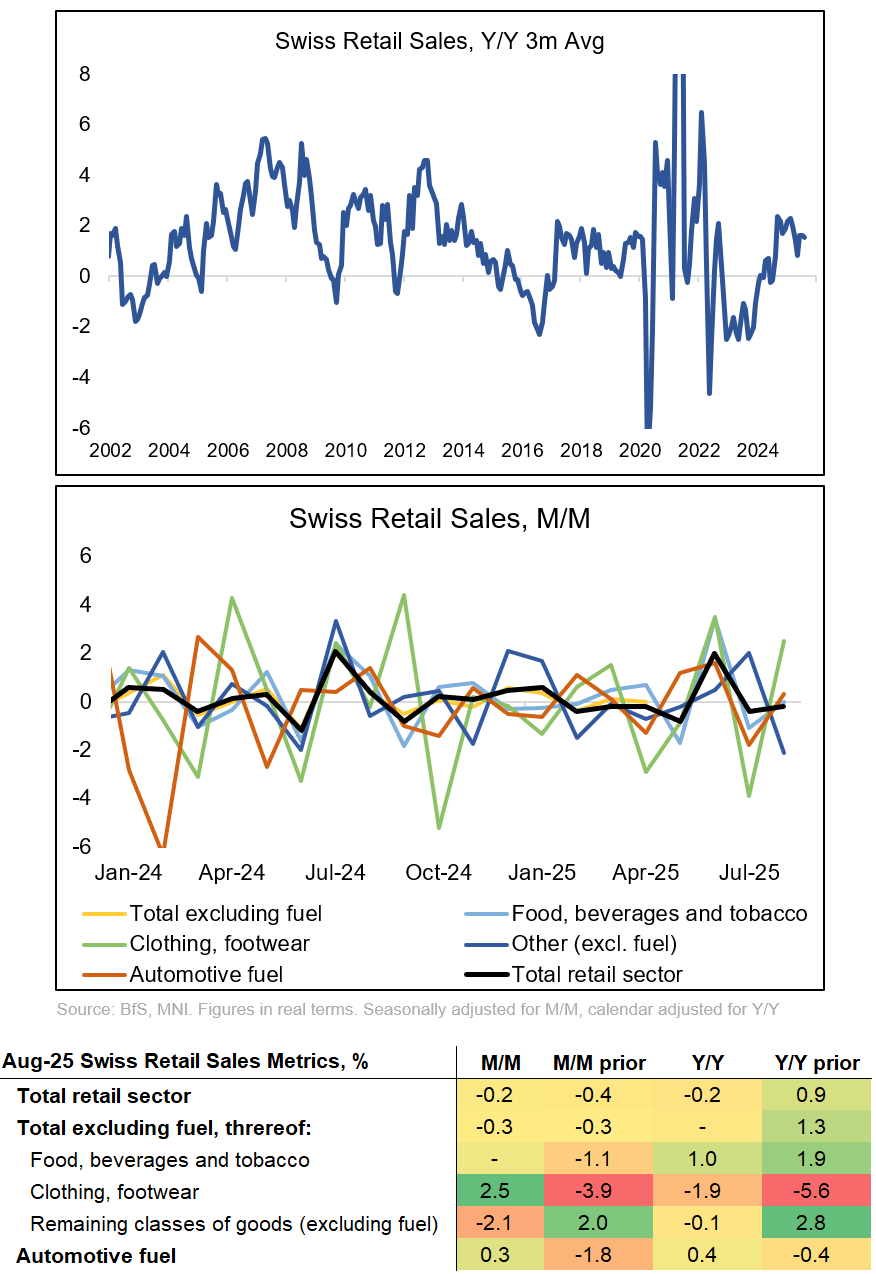OIL: KPC Offers Additional Heavy Crude After Al-Zour Refinery Outage
Oct-31 09:26
Kuwait Petroleum Corp has offered additional heavy crude for prompt loading in November following an...
Want to read more?
Find more articles and bullets on these widgets:
Historical bullets
FOREX: GBPJPY Extends Below 50-Day EMA, CADJPY Slips to 3-Month Lows
Oct-01 09:19
- The general risk off tone on Wednesday is providing a safe haven bid to the Japanese yen, adding to the themes touched upon in the above post. This has prompted some notable declines for Cross/JPY, with CADJPY (shown below) breaking through a cluster of lows around 106.00 and slipping to a fresh three-month low.
- Bearish developments have been bolstered by a trendline break from the April lows, and price action signals scope for an initial move to 104.85, the July 01 low. Canada employment data is not due until next Friday.
- We had been highlighting GBPJPY as a potentially vulnerable candidate to further yen demand, and the significance of the 50-day EMA. The cross broke below the average, which intersects at 198.98, and the next downside target would be 195.04, the August low.
- AUDJPY had been in a strong uptrend, however, the most recent turn lower has seen the cross dip back to an area of support around 97.25, notably breaching the 20-day EMA which has been supportive in recent weeks.
- In similar vein, EURJPY bullish momentum stalled above 175 having traded to within 30 pips of the 2024 highs at 175.43. Spot now trades back below 173, having pierced the 20-day EMA. Support to watch lies at 172.46, the 50-day EMA.

Source: Bloomberg Finance L.P. / MNI
EUROPEAN INFLATION: HICP broadly in line with consensus: The breakdown
Oct-01 09:08
- Eurozone HICP came in at a little below the MNI tracking of 2.3% with 2-way risks at 2.23%Y/Y, but broadly in line with the market consensus.
- Core and services both rounded down to consensus expectations, although core at 2.35%Y/Y was almost 2.4%.
- It appears as though FAT (food, alcohol and tobacco) is the only notably surprise, coming in softer than expected at 3.04%Y/Y (down from 3.19%Y/Y where it was expected to remain).
- No substantial market reaction, given that the data was broadly in line with expectations.
SWITZERLAND DATA: August Retail Sales Weak But Broader Picture Solid So Far
Oct-01 09:06
Swiss (real) retail sales were rather weak in August on a sequential comparison, at -0.2% M/M.
- Looking at the drivers of the release shows that weakness was centred in the "remaining" category (which contains a lot of durable goods, table below). The August data was the first incorporating the 39% US tariffs levied on Swiss goods. The question is if this filtered through to consumer scepticism here already.
- However, on a broader 3-month moving average of the Y/Y measure, Swiss retail sales continue to grow around their long term average rate, at a current 1.5% (1.6% July).
- This means the big picture is that the Swiss consumer overall continues to screen healthy. However, we watch for potential signs of a cooling of the propensity to consume going forward.

Related bullets
Related by topic
Gasoil
Oil Positioning
OPEC
Gasoline
Diesel
Energy Data
Kuwait